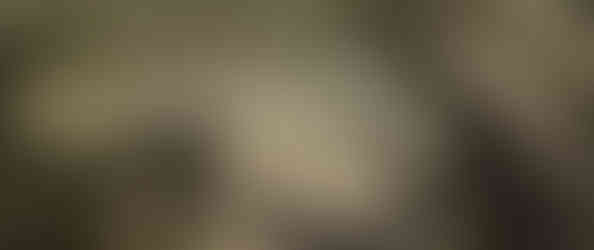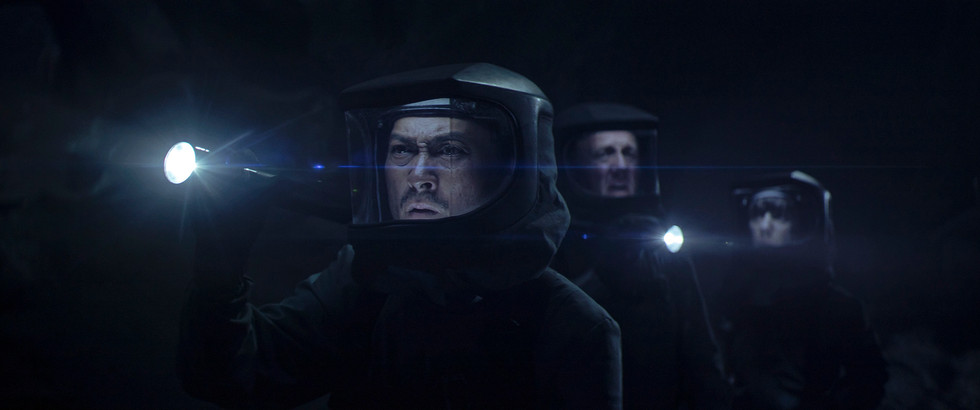“Godzilla” 2014 stomps over to 4K Ultra HD
- Bill Kelley III
- Apr 16, 2021
- 6 min read
Updated: Jun 24, 2022
4K ULTRA HD REVIEW / HDR FRAME SHOTS
(1&2) After an all-night battle between Godzilla and two MUTO's Dr. Ishiro Serizawa (Ken Watanabe) of Monarch Sciences witnesses the wonder of King of the Monsters.
(Click an image to scroll the larger versions)
“GODZILLA”
4K Ultra HD, Blu-ray, Digital copy; 2014; PG-13 for intense sequences of destruction, mayhem and creature violence; streaming via Amazon Prime Video (4K), Apple TV (4K), FandangoNOW (4K), Google Play (4K), Movies Anywhere (4K), Vudu (4K), YouTube (4K)
Best extra: “Godzilla a Force of Nature” featurette
SEATED IN a movie theater watching the smackdown between “Godzilla vs. Kong” with my son and 50 other Southern California moviegoers was pure cinema bliss. The noisy fourth installment of Legendary Pictures’ “MonsterVerse” series has become the first worldwide blockbuster of 2021, topping nearly $360 million in just three weeks as theaters reopen in limited capacity a year into COVID-19.
To coincide with the opening, Warner Brothers has finally given “Godzilla,” the first of its franchise, a 4K Ultra HD release. “Kong: Skull Island” (2017) and “Godzilla: King of the Monsters” (2019) came out on 4K after the original theatrical run.
Four years after Japan’s tragic tsunami and Fukushima nuclear reactor meltdown, sophomore British director Gareth Edwards (“Rogue One: A Star Wars Story”) helmed “Godzilla,” a $160 million reboot of the 1954 Japanese franchise of 32 films inspired by the nuclear bombing of Hiroshima and Nagasaki. Edwards got the job after the success of his indie thriller “Monsters” (2010), made on an $800,000 shoestring budget. He finished the special effects on his laptop.
Philippines - 1999
(1-3) Dr. Ishiro Serizawa and Dr. Vivienne Graham (Sally Hawkins) arrive at the Universal Western Mining site, as the supervisor Jerry Boyd (Eric Keenleyside) greets the Monarch scientists. They quickly head to the underground fossilized rib cage of a MUTO.
“Godzilla” starts out with a bang, with excellent production values. It received respectable reviews from top critics – 76 percent on Rotten Tomatoes – as audiences pushed the worldwide gross to $524 million. Grainy opening credits reveal the king of monsters has been around since the 1950s, when the U.S. Bikini Island A-Bomb tests attempted to kill Godzilla, called “Gojira” in Japan. The story opens with a 1999 flashback in the Philippines as a mining operation unearths a massive, fossilized rib cage of a MUTO (Massive Unidentified Terrestrial Organism). Monarch scientists Dr. Ishiro Serizawa (Ken Watanabe) and Dr. Vivienne Graham (Sally Hawkins) go on the hunt. Soon two bug-like, giant MUTOs begin roaming the planet feeding off nuclear fuel and weapons.
American nuclear engineer Joe Brody, played by Bryan Cranston (“Breaking Bad”), oversees a Japanese nuclear plant located under the shadow of Mount Fuji. He discovers mysterious seismic activity unrelated to earthquake activity. Joe’s wife Sandra, played by French actress Juliette Binoche (“The English Patient,” “Chocolat”), also works at the plant, and has assembled a team to look for damage. Next, the facility begins to shake and three cooling towers collapse. A radiation leak kills Sandra and her team. Joe and his 10-year-old son Ford survive while the Janjira area is evacuated and quarantined.
Fast-forward 15 years and we learn Joe lives that day over and over. He’s convinced the meltdown wasn’t caused by an earthquake as reported by the Japanese government, but by something very different. Ford Brody (Aaron Taylor-Johnson), now a Navy lieutenant and ordnance disposal officer, finally returns home in San Francisco to his wife Elle (Elizabeth Olsen) and son Sam (Carson Bolde) after a 14-month deployment overseas. Before he can unpack, Ford finds himself back on a plane to Japan, and bailing his dad out of jail for sneaking into the quarantine zone, where the plant used to be. Joe enlists Ford into a new mission – returning to their old family home to find his original seismic data.
Godzilla is introduced gradually, similarly to Ishiro Honda’s original film. Two MUTOs. male and female, meet and mate during a reign of terror spreading from Honolulu to Las Vegas, and eventually San Francisco. The fire-breathing Godzilla has plans for Ford and Elle.
Janjira, Japan - 1999
(1) A rainy day in Janjira, Japan as Joe and Sandy Brody, (Bryan Cranston & Juliette Binoche) head to the nuclear power plant. (2) Joe discovers the plant is operating at 100 percent, even though there's been seismic activity. (3) The facility starts to shake and a radiation leak ends up killing Sandy and her team.
EXTRAS
All of the original, half-dozen bonus features are carried over to the enclosed, recycled Blu-ray. During “Godzilla Force of Nature,” Edwards says he considers Godzilla one of the most recognizable characters on the planet. “Everybody sees that thing that looks like a giant dinosaur over a city and they just know its Godzilla,” he says. The director remembers the first time he saw Godzilla, late one Friday night on Channel 4 TV in the U.K. He recalls how the U.S. censored Japan after World War II, and that the original “Godzilla” was a metaphor for Hiroshima, the first city destroyed by a U.S. detonated atomic bomb on August 6, 1945.
Edwards also details the creation of his high-tech Godzilla with visual effects supervisor Jim Rygiel. Wearing a bodysuit, Hauro Nakajima portrayed the monster in all the Japanese films up to “Godzilla vs. Megalon” (1973). The 2014 FX vision uses a lava-like texture. “It has a sort of dark, flat look to it, but it has all these little fine details and pockmarks and irregularities,” says Rygiel, who worked on Peter Jackson’s “Lord of the Rings” trilogy. Jackson’s WETA facility in New Zealand handled Godzilla’s 2014 reboot. Extras also show how early computer models morph into the final monsters.
In “A Whole New Level of Destruction,” production designer Owen Paterson says the film was made on location as much as possible, as opposed to using soundstage sets. Other elements were added without using a green screen. “A lot of the time, we didn’t have to imagine it. It was there. We were in it,” says actress Sally Hawkins.
Edwards’ production tried to fill the first 100 feet of scenes with real objects. Vancouver and its surrounding area became their production base, using an old paper mill as the exterior of the nuclear power plant. Over a hundred sets were created in Canada and Hawaii.
A series of fictional Monarch conspiracy mini-documentaries are included, playing like a TV program for the History Channel or Syfy Channel.
15 years later - 2014
(1) Ford Boyd, son of Joe and Sandy, returns home to his wife Elle (Elizabeth Olsen) and son Sam (Carson Bolde), after a 14-month deployment with the U.S. Navy. (2&3) Ford heads to Japan to bail out his father who was arrested for trespassing into the quarantine zone of the former nuclear plant site. (4&5) Joe enlists Ford into a new mission – returning to their old family home, which they abandoned when the plant was destroyed.
VIDEO
Originally captured on 2.8K digital cameras (2.39:1 aspect ratio), with nearly 1,000 FX shots, Edwards and twice Oscar-nominated cinematographer Seamus McGarvey (“Atonement,” “Anna Karenina”) mastered the digital files in 2K. The new upconverted 4K provides some improvement in overall sharpness and clarity. It’s first evident in a distant shot of a Monarch helicopter flying into the massive mining pit with thousands of workers and heavy equipment. You’ll see improved definition around each worker and the yellow Caterpillar equipment, which are all FX created. Edwards and McGarvey decided to capture the action by placing the camera at a human perspective, either from a helicopter, handheld, or by someone on the ground.
One of the biggest complaints of the original Blu-ray was its overall darkness, which mimicked the theatrical experience. The good news here is the added HDR10 (physical disc), Dolby Vision (digital) and contrast boost provide better visuals, and still have inky blacks. For example, when Dr. Serizawa and Dr. Graham enter the dark cavern where the fossilized rib cage is located, there’s a better separation between them and the gloom. Plus, their faces are more illuminated when they wear breathing apparatuses. It’s similar to scenes in Ridley Scott’s “Alien” and “Prometheus” when the crews discover the alien pods. The color palette is on the bluish cold side, while the facial toning is natural from start to finish.
(1) Joe and Ford are arrested and taken to the old plant site, which now houses a large laboratory for studying a mysterious and strange chrysalis. A MUTO create appears from the chrysalis, and escapes into the night sky. (2) Admiral William Stenz (David Strathairn) heads up the U.S. Navy's response to the MUTO attacks. (3) A commercial airliner crashes after an encounter with a MUTO.
AUDIO
The 4K includes an eight-channel Dolby Atmos track, while the Blu-ray includes DTS-HD. To be frank, effects and music cues to height speakers is used sparingly. Sometimes the film runs minutes without anything coming from overhead speakers. It’s more active when the monsters battle, but seldom used for any helicopter effects or upward movement. It’s the subwoofer that really gets the workout.
I’m lucky to not share walls as in an apartment or duplex, and have a separate theater room from the rest of the house, so the deep bass doesn’t cause a problem. The soundtrack bounces from height to the rest of the surround speakers, and is nicely balanced upfront, with dialogue and French composer Alexandre Desplat’s (“The Shape of Water,” “The Grand Budapest Hotel,” “Little Women”) melodic and percussive heavy blasts.
“Godzilla” 2014 is a nice 4K upgrade.
— Bill Kelley III, High-Def Watch, producer



















































Comments